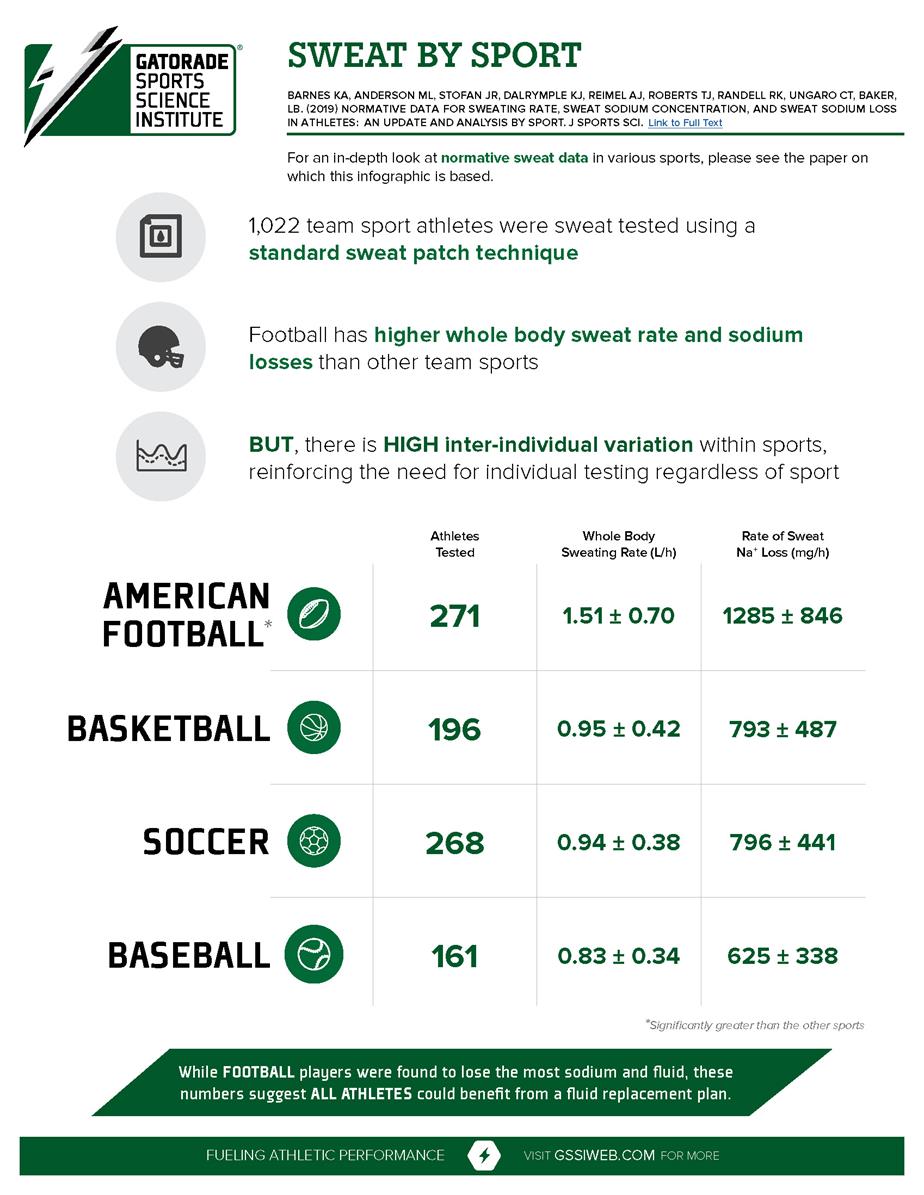Abstract
The purpose of this study was to expand our previously published sweat normative data/analysis (n = 506) to establish sport-specific normative data for whole-body sweating rate (WBSR), sweat [Na+], and rate of sweat Na+ loss (RSSL). Data from 1303 athletes were compiled from observational testing (2000–2017) using a standardized absorbent sweat patch technique to determine local sweat [Na+] and normalized to whole-body sweat [Na+]. WBSR was determined from change in exercise body mass, corrected for food/fluid intake and urine/stool loss. RSSL was the product of sweat [Na+] and WBSR. There were significant differences between sports for WBSR, with highest losses in American football (1.51 ± 0.70 L/h), then endurance (1.28 ± 0.57 L/h), followed by basketball (0.95 ± 0.42 L/h), soccer (0.94 ± 0.38 L/h) and baseball (0.83 ± 0.34 L/h). For RSSL, American football (55.9 ± 36.8 mmol/h) and endurance (51.7 ± 27.8 mmol/h) were greater than soccer (34.6 ± 19.2 mmol/h), basketball (34.5 ± 21.2 mmol/h), and baseball (27.2 ± 14.7 mmol/h). After ANCOVA, significant between-sport differences in adjusted means for WBSR and RSSL remained. In summary, due to the significant sport-specific variation in WBSR and RSSL, American football and endurance have the greatest need for deliberate hydration strategies.
Abbreviations: WBSR: whole body sweating rate; SR: sweating rate; Na+: sodium; RSSL: rate of sweat sodium loss

To download this infographic - please click here
J Sports Sci (2019). 37:2356-2366.




